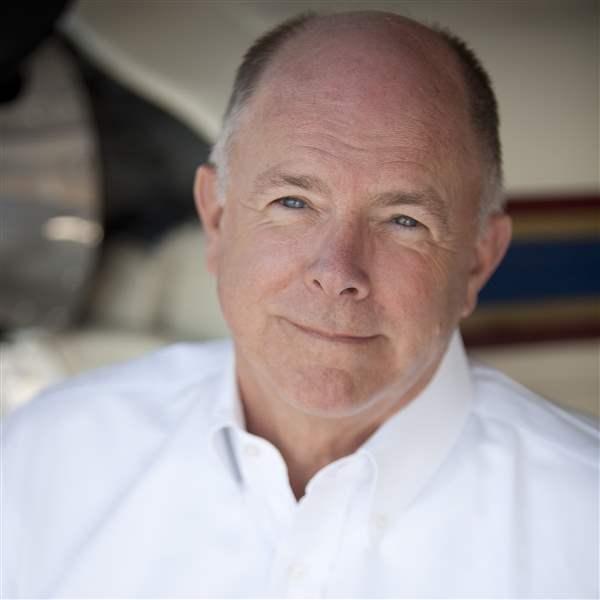A one-man machine
Little Hawk Logisitics’ economical charters

Those early inspirations got the ball rolling. Walden started flying at age 15, got his private pilot certificate at 17, spent summers at the FlightSafety Academy in Vero Beach to earn more certificates and ratings, and instructed at the academy to build time and experience. Then it was time to step up to the big leagues; Walden served five years as a captain flying Jetstream 41s and Dornier 328s for Atlantic Coast Airlines, and then flew Cessna Citation Excels and XLSs for fractional operator NetJets for 11 years.
“That was great for a while, but then I realized I just wasn’t having fun flying like that anymore,” Walden said. That gave him the idea to start his own charter operation, and it prompted him to check out the general aviation turboprop market. “I looked at King Airs and the Pilatus PC–12, trying to differentiate their advantages—and then I went to Oshkosh [EAA AirVenture] when Socata’s TBM 850 came out,” he said. “And that did it. I’d heard about the TBM line but hadn’t really checked them out.”
For Walden’s mission objectives, the TBM 850 made a lot of sense. “I mean, the TBMs fly at 90 percent of a very light jet’s speed, but cost half as much to operate. The cost per mile works out to about $4,” he said. “Plus, they look great.”
Walden bought a used, one-owner 2007 TBM 850 from Groton, Connecticut-based Columbia Air Services in April 2014 and replaced the legacy, round-gauge avionics with a Garmin G600 and Garmin GTN 750 to go along with his existing Garmin GNS 530W.
Then he formed his company: Little Hawk Logistics. Why Little Hawk? That was the name a young Al Ueltschi chose for his hamburger stand, back when he was learning to fly. The hamburger stand served as collateral for a bank loan to buy Ueltschi’s first airplane: a Waco biplane.
After that, Walden put his TBM on Meridian Air Group’s Part 135 certificate. This gives the training, maintenance monitoring, tracking, and dispatching responsibilities to Meridian, a Charlottesville, Virginia-based operation. Walden is a Meridian employee, and it’s up to him—with Meridian—to bring in the passengers. He pays himself as an independent contractor by keeping a percentage of his fares, and pays the rest to Meridian, which also operates two Pilatus PC–12s under Part 135.
Before any of this could happen, Walden needed a Part 135 checkride to qualify as one of Meridian’s charter pilots. He had the airplane for the checkride and knew the TBM 850 inside out, but the rules state that he had to have instruction from a Part 135-qualified instructor. And because of the newly added G600 and GTN 750, the local flight standards district office (FSDO) required a Part 135 training manual.
This normally would be just another bureaucratic hurdle, except that there were no Part 135-approved TBM instructors in the United States—because until then, there wasn’t a need for any. Walden says his company was the first, and remains the only one, to use a TBM under Part 135. The upshot: Walden had to send an instructor to Simcom’s training center in Orlando for training to earn Part 135 examiner privileges. In all, it took a full year before he could use his TBM in charter operations.
In 2015—the first year that Walden was operating—he flew the TBM on 325 hours’ worth of charters. By late 2016, he was on track to beat that. He’s found a niche in the 300- to 700-nautical-mile route length, flying out of his base at the Charlottesville airport, where he’s co-located with the Meridian Air Group.
“People didn’t seem to know that a service like mine even existed,” he said. “If you mention ‘airplane charter’ to most people, they think of Gulfstreams and astronomical prices.”
Little Hawk specializes in taking customers on two- and three-hour trips, charging $1,250 an hour. Shared among three or four people, the price per person makes it worthwhile for those who don’t want the aggravation of driving all day to a destination that’s a mere one-hour flight in the TBM 850. Walden pitches his service not just for those needing to go shorter distances, but for staging purposes as well. Many of Walden’s customers in central Virginia and elsewhere hire Little Hawk to take them to large hub airports, where they catch long-distance airline flights.
The day we caught up with Walden he had just flown three passengers from Indianapolis to Teterboro Airport in New Jersey, so they could catch a flight to Europe from nearby Newark Liberty International Airport. Then it was back to Charlottesville and another charter the following day.
“I can fly three passengers with full fuel and have a range of 1,200 nautical miles,” Walden said. While most of his trips run to destinations along the East Coast, this load-hauling capability has let him serve destinations as far afield as Flagstaff, Arizona; Telluride and Denver, Colorado; and the Caribbean.
Firms such as Portsmouth, New Hampshire-based PlaneSense, with its 40-odd Pilatus PC–12 fleet, helped kick off the single-engine turboprop charter movement in the United States. Little Hawk is proving that TBMs can hold their ground in the same marketplace. If business continues at its present level, Little Hawk may be buying another TBM (“a 900 or 930, I hope,” Walden said) and hiring another pilot.
Email [email protected]



